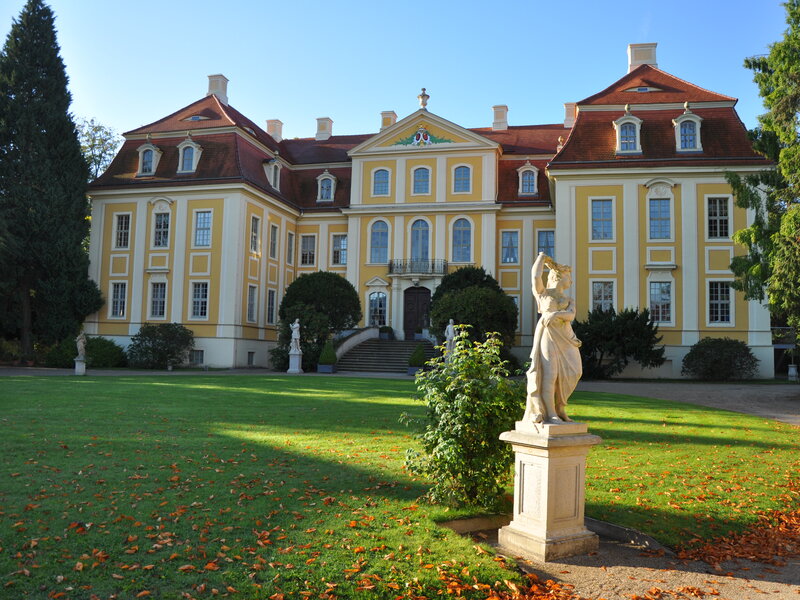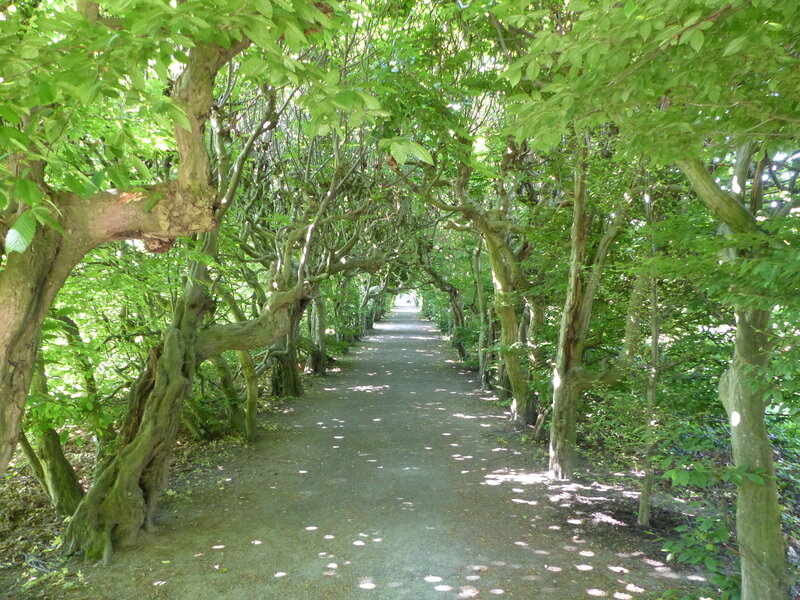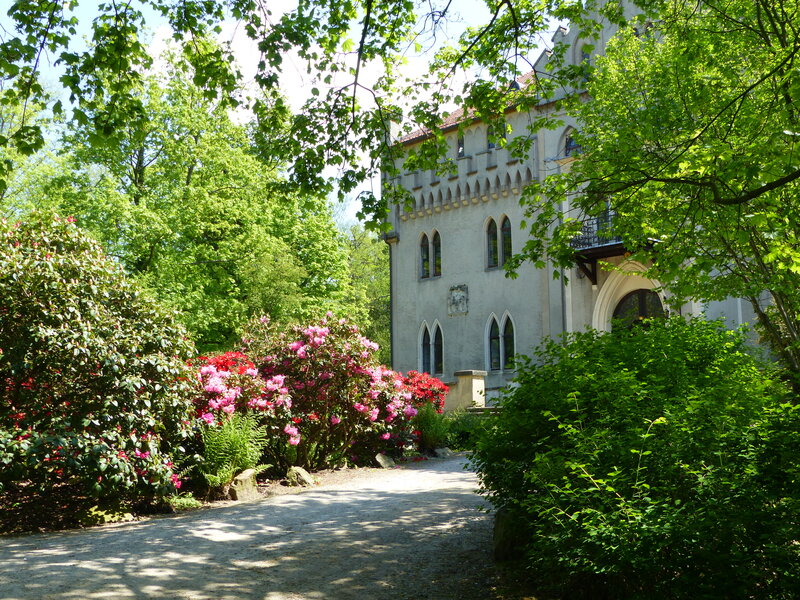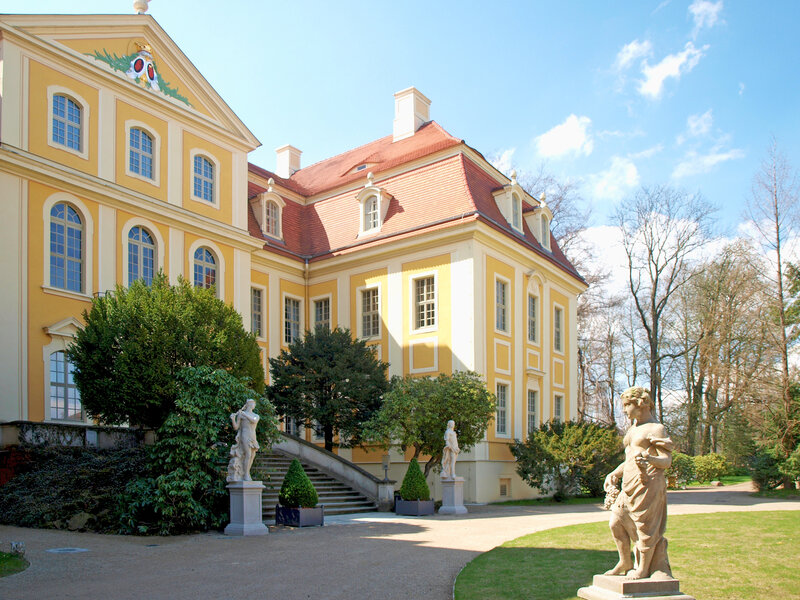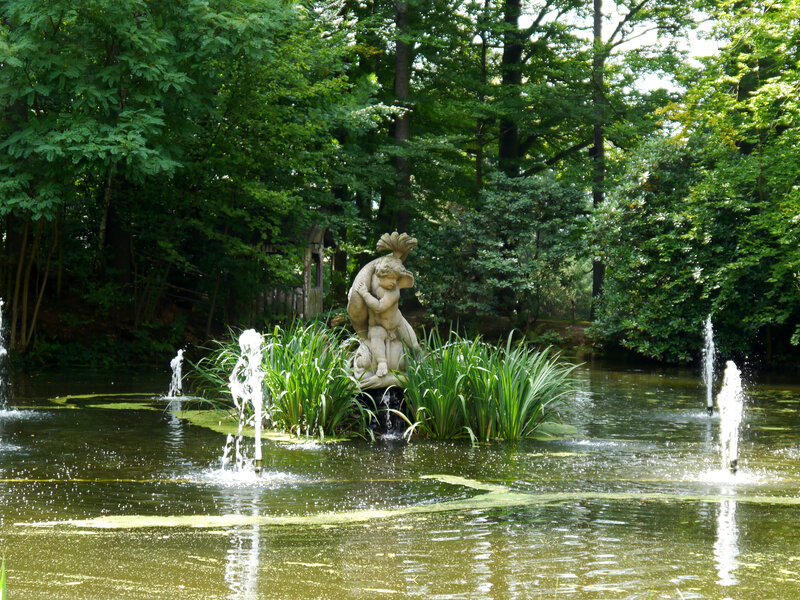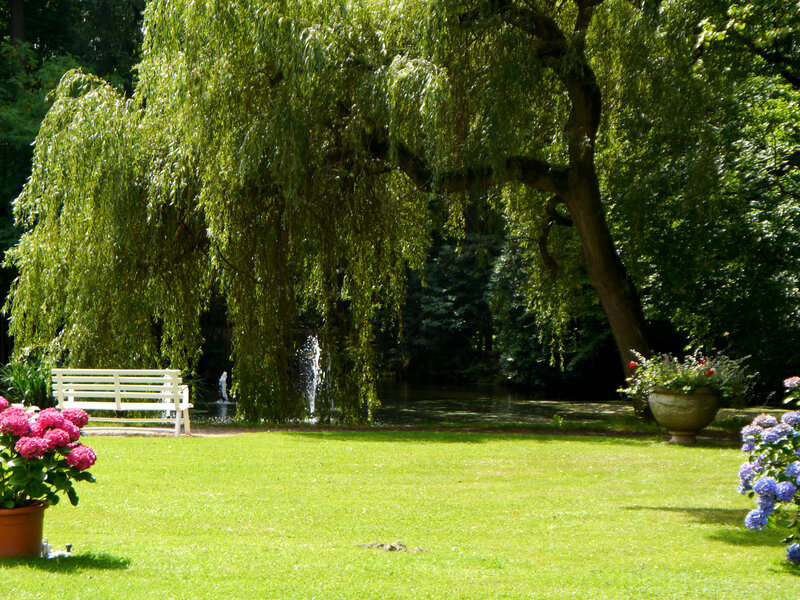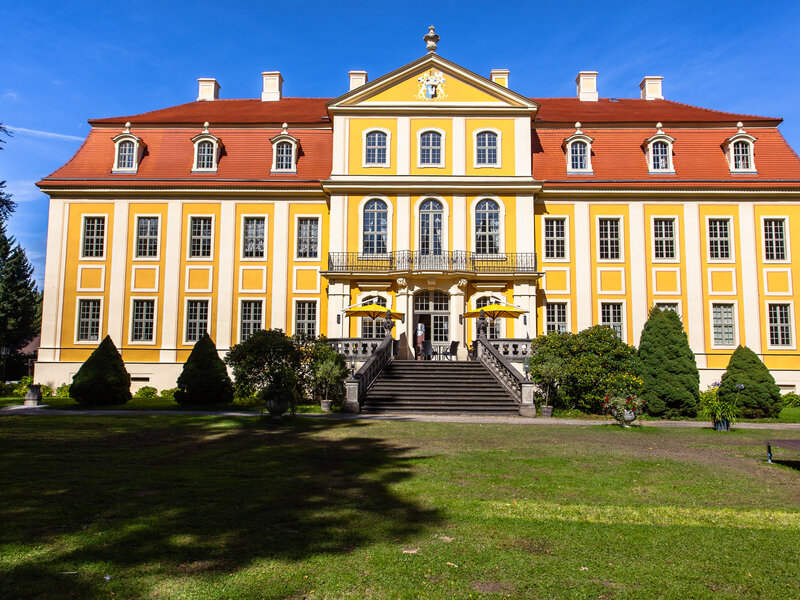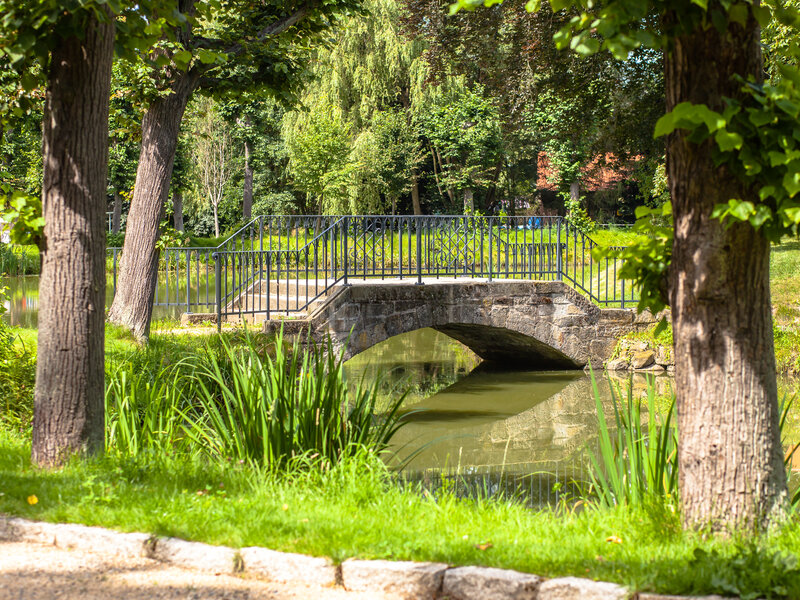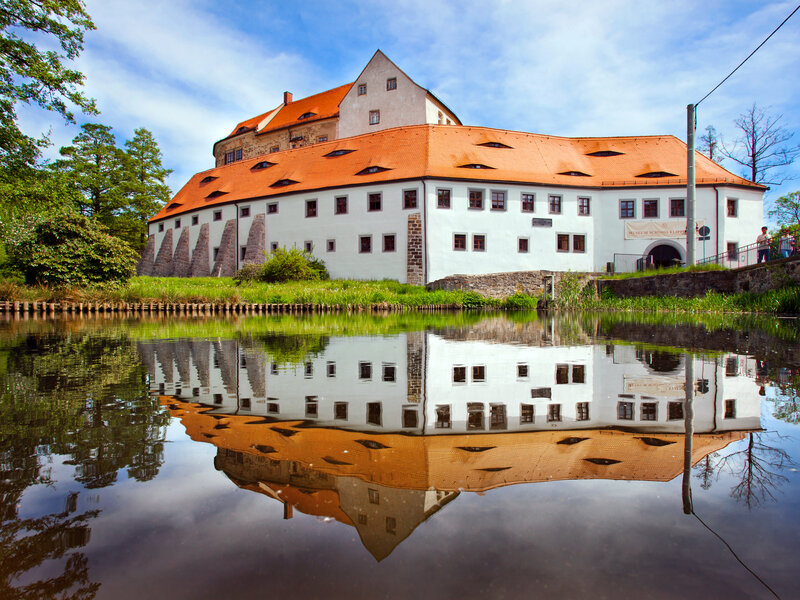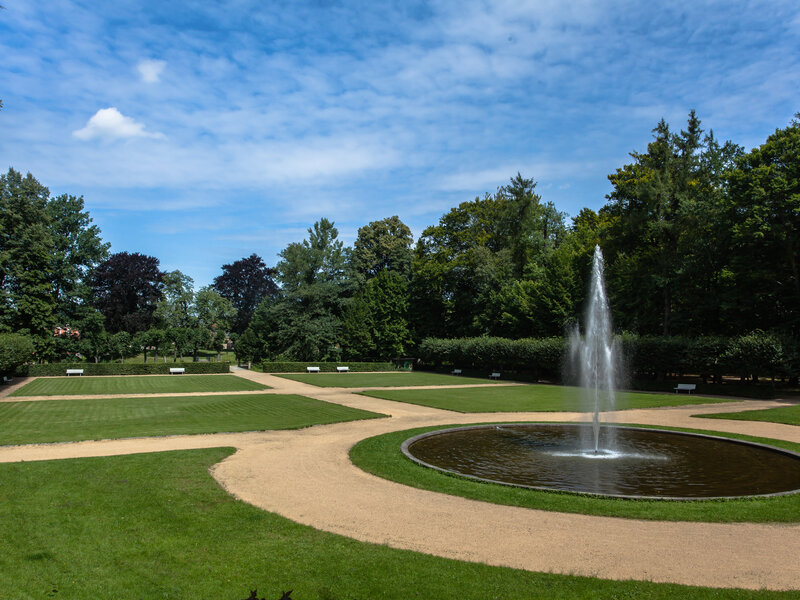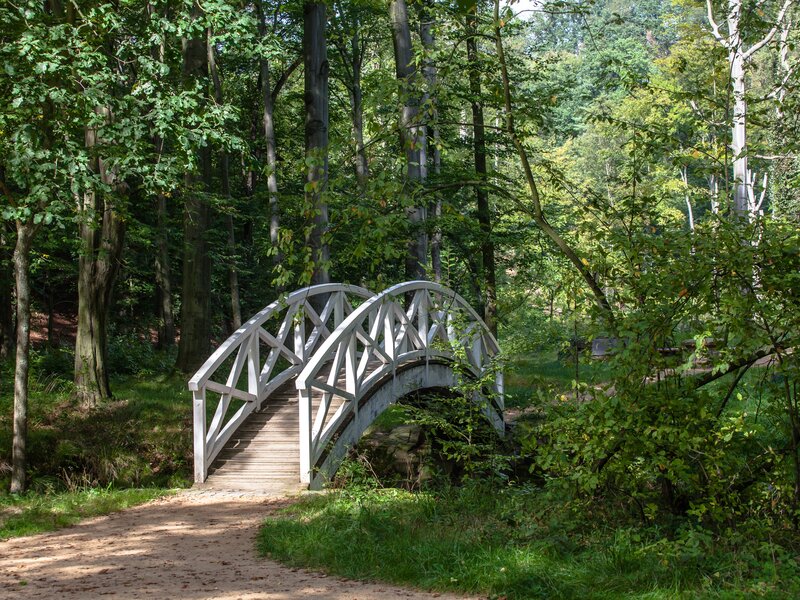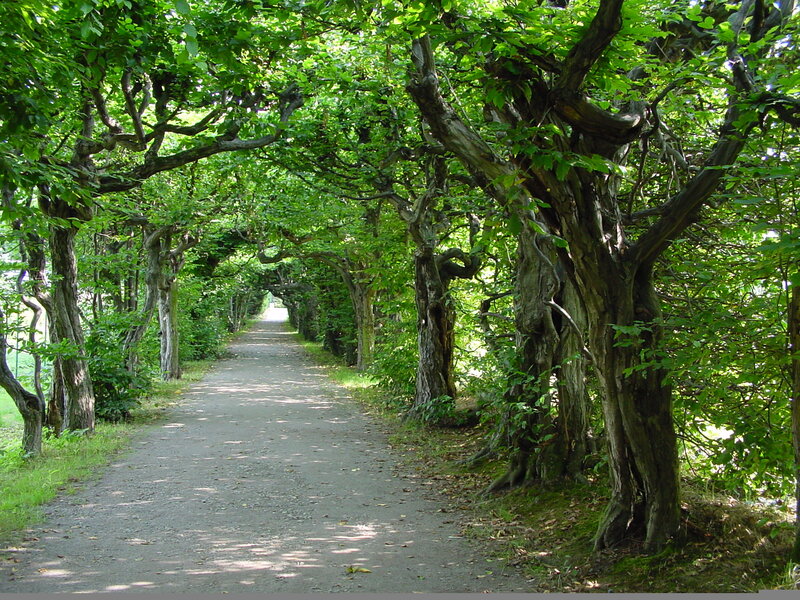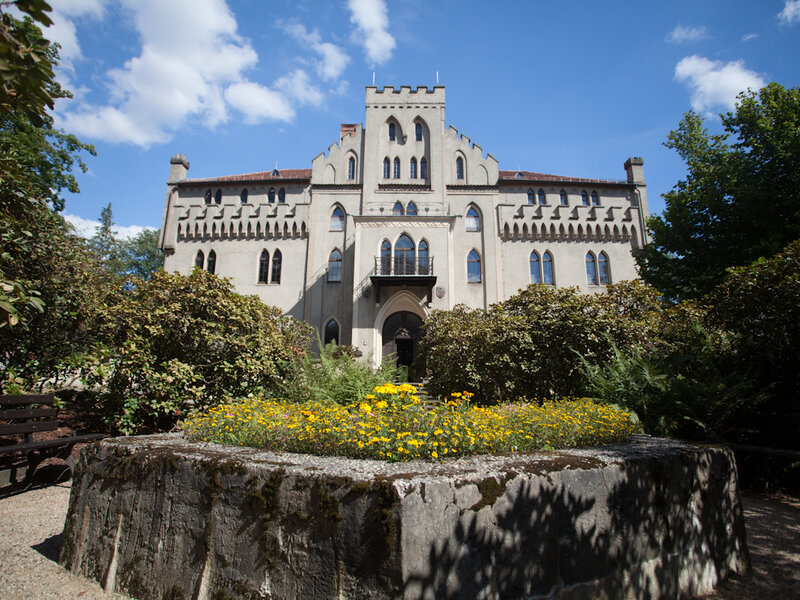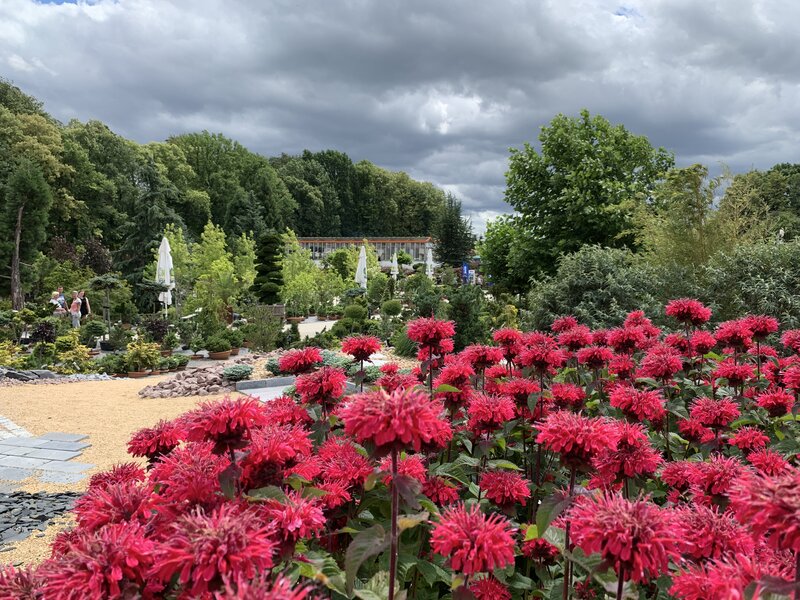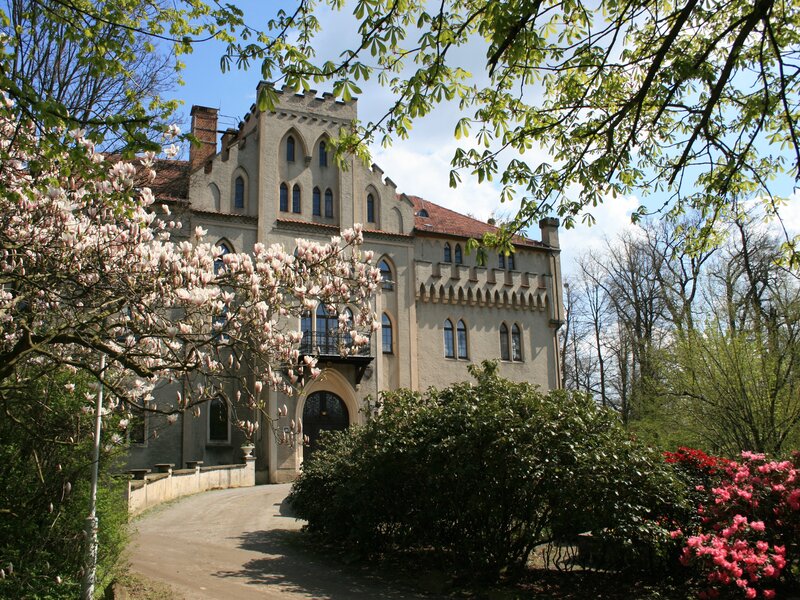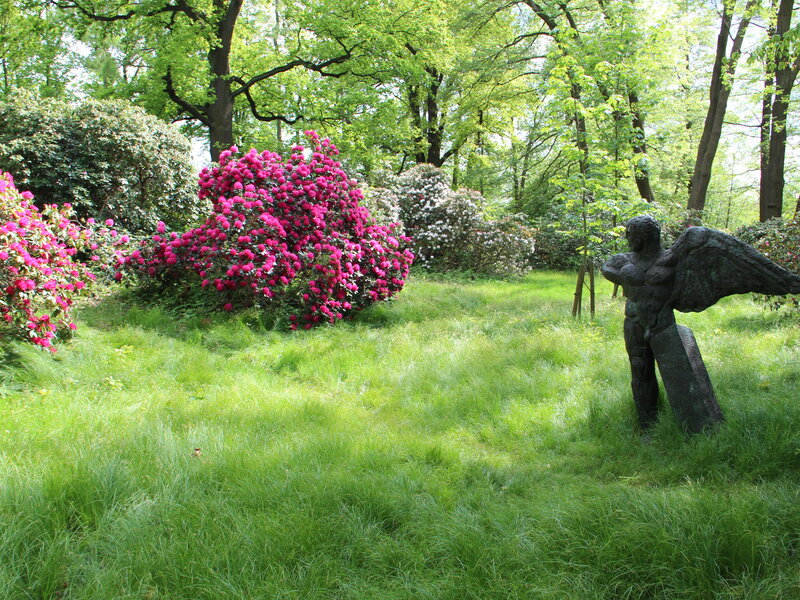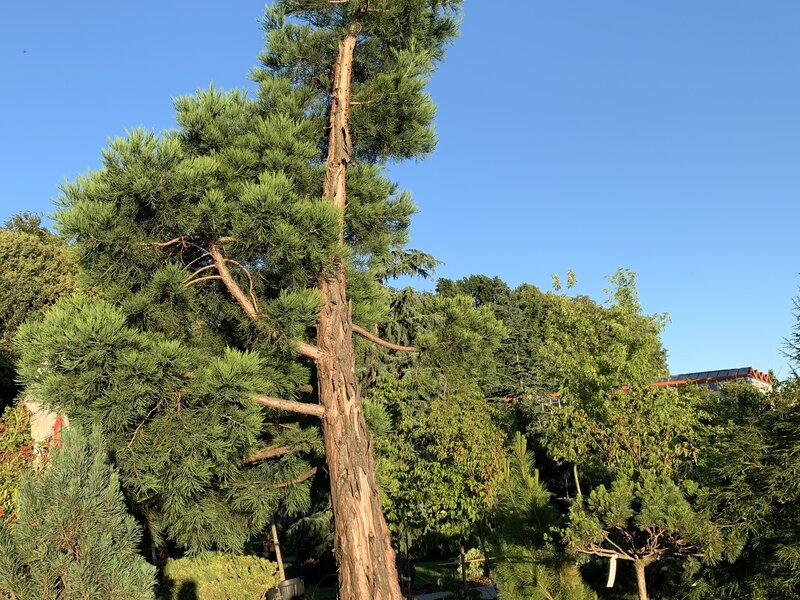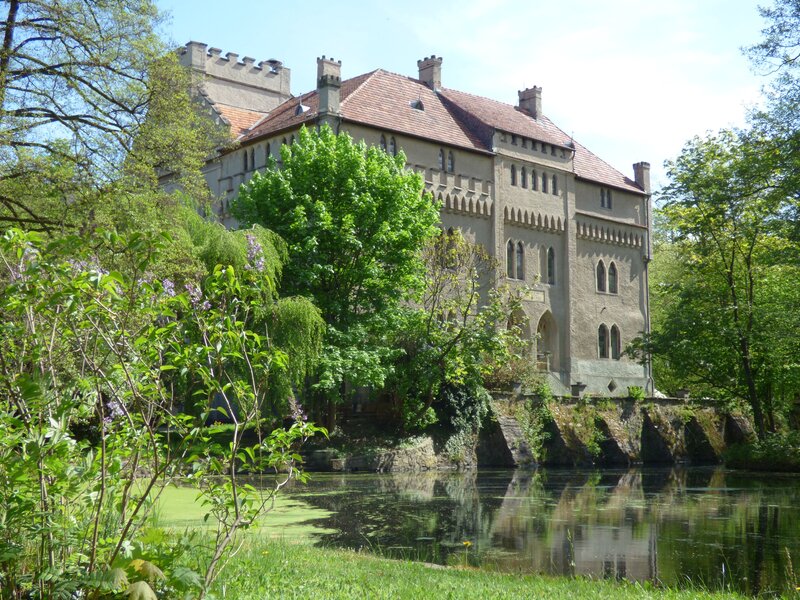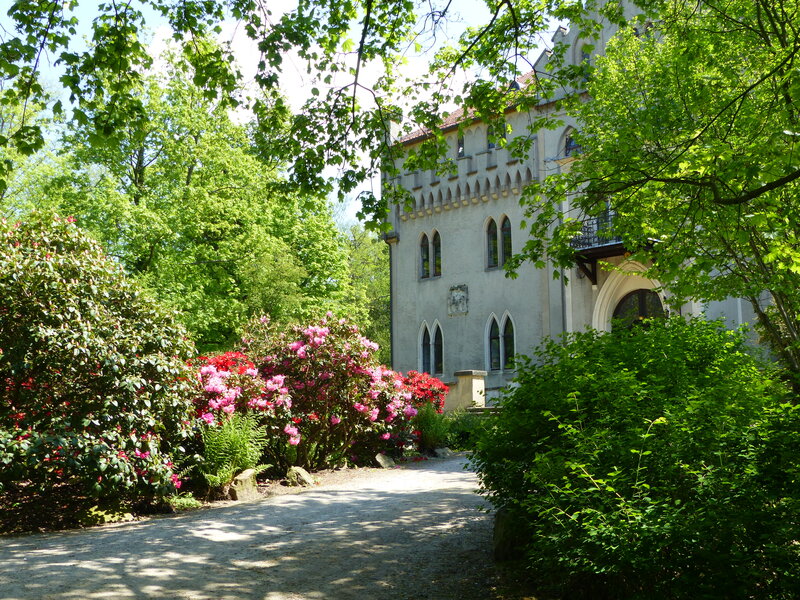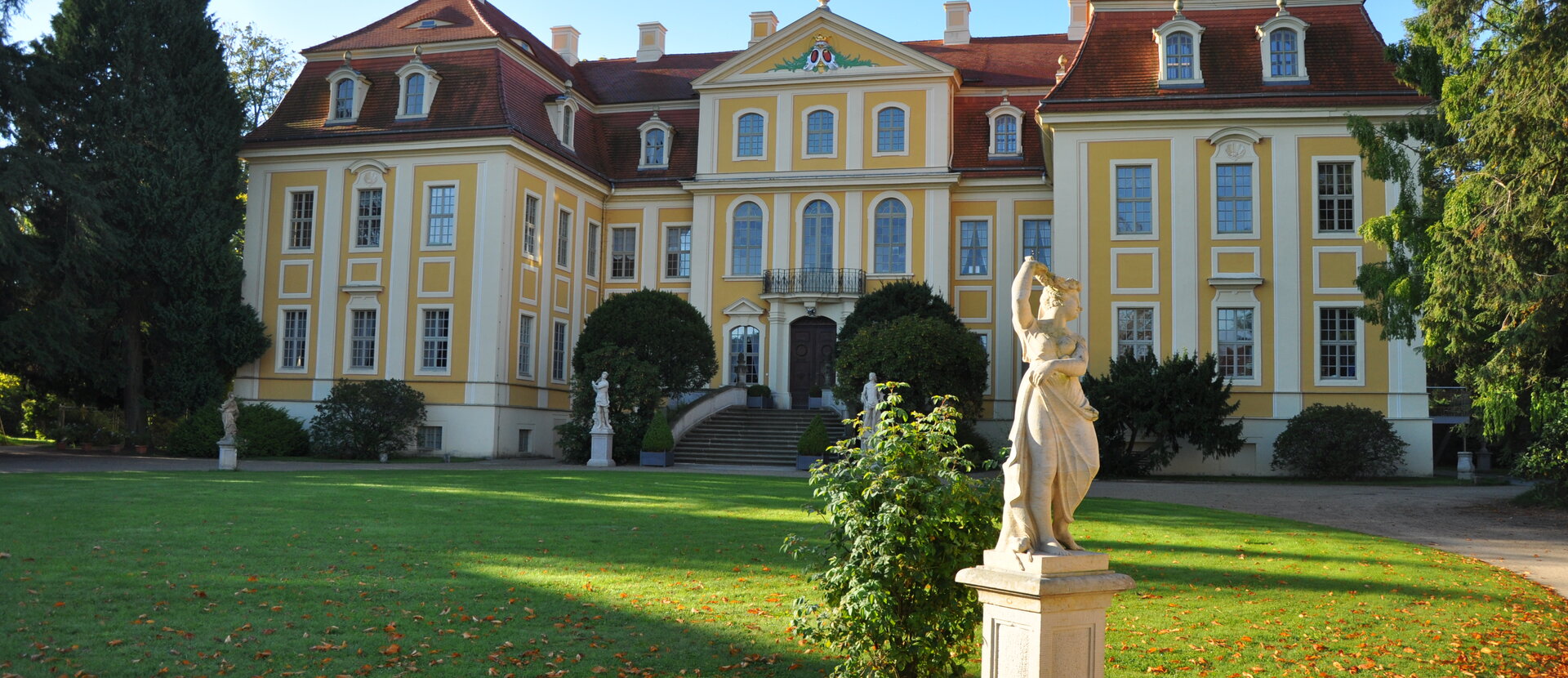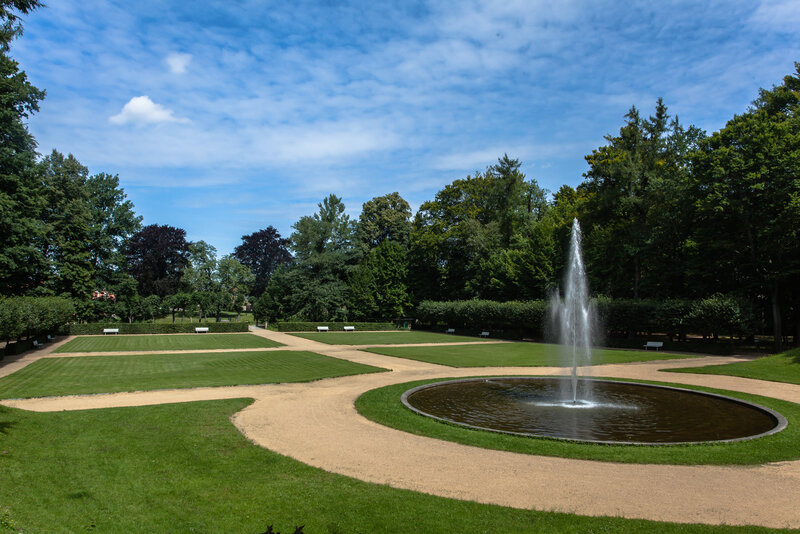Wild gardens, straight lines and baroque splendor
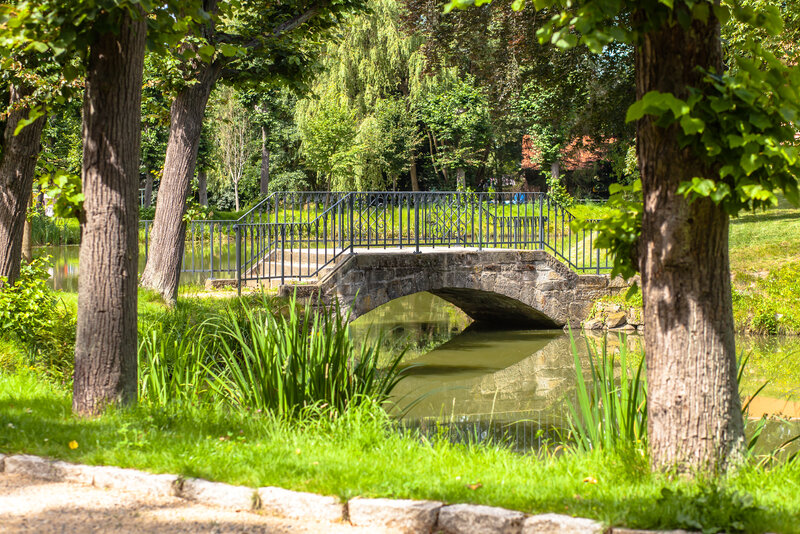
Großharthau Castle Park
The listed castle park with gondola pond is located in the historic town center of Großharthau. Its history is closely linked to the Saxon court of the 18th century. The lady who commissioned the park, Countess von Fleming, had it richly decorated with sculptures, fountains and orangeries.
In the 19th century, the park was landscaped and later given a neo-baroque makeover. Worth mentioning is the baroque layout of the garden in three terraces, which is characterized by a large lawn with Permoser figures and the 8 m high fountain as well as baroque avenues of lime trees.
In earlier years, there was a (moated) castle on the island in the middle of the park. However, this was badly destroyed by fire at the beginning of 1946 and demolished down to its foundations in the following years. Every year in June, the park hosts the LebensArt fair, which is very popular with visitors. On weekends in summer, visitors can go canoeing on the castle pond.
The park is freely accessible.
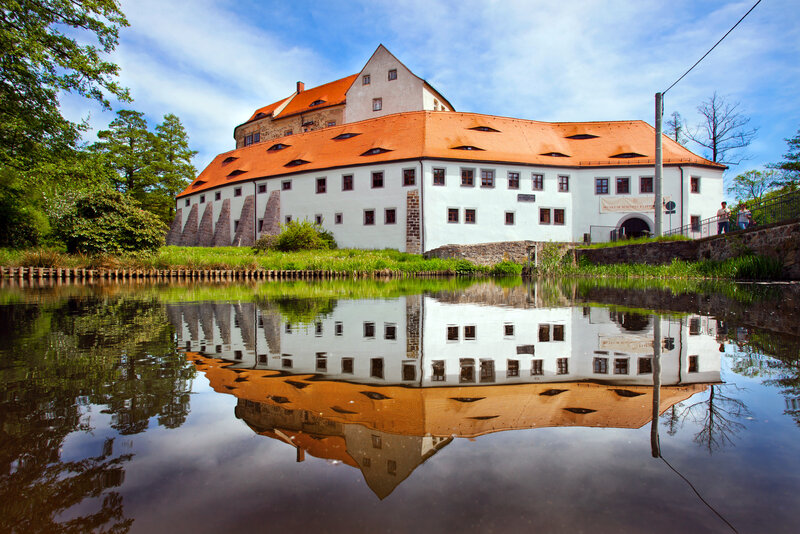
Klippenstein Castle (Radeberg)
Klippenstein Castle is a former princely castle in Radeberg.
Over 800 years old, the "Castrum Radeberch" now welcomes its guests as a modern castle and town museum. The medieval castle and its transformation into a Renaissance palace under Elector Moritz can be explored. Interactive exhibitions with fascinating exhibits from several centuries show the blossoming and threat of urban life in Radeberg from the founding of the town to the bustling industrial town. A tour of the medieval castle complex from the owl tower to the equestrian staircase to the black kitchen is recommended to round off the visit.
With its special exhibitions, readings, concerts and diverse educational programs, Klippenstein Castle is one of the cultural centers for Radeberg and the region.
Address:
Schlossstraße 6
01454 Radeberg
Telephone 03528 44 26 00
E-mail: kontakt@schloss-klippenstein.de
Homepage: www.schloss-klippenstein.de
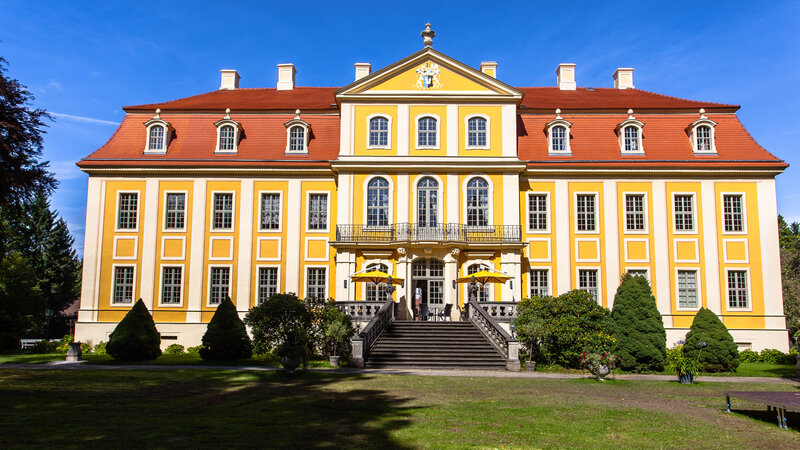
Baroque Rammenau Castle with castle park
The baroque Rammenau Castle is one of the most beautiful preserved baroque country castles in Saxony. Ernst Ferdinand von Knoch acquired the estate in 1717 and had Johann Christoph Knöffel completely rebuild a two-storey Baroque palace from 1721.
He also laid out a baroque garden, which was later transformed into an English landscape park. The interior of the castle was later altered in a neoclassical style. In 1967, a museum opened in the castle with an exhibition on the philosopher Johann Gottlieb Fichte. In 1993, the baroque castle became the property of the Free State of Saxony.
Various guided tours (also outside opening hours) are available by prior arrangement.
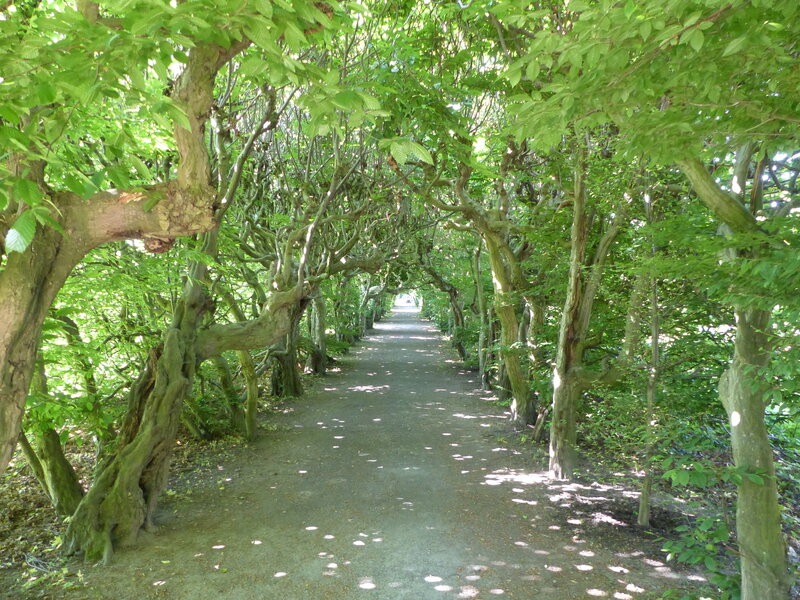
Pulsnitz Castle Park
The castle park in Pulsnitz invites you to take a walk or to relax and linger. Although the trees and shrubs are not particularly exotic, they are remarkable for their above-average age. The oldest oak trees date back to the 16th century. The exact date of origin of the park cannot be proven. However, it can be assumed that there was a Renaissance garden and that it was redesigned in the same period when the Baroque palace was built in 1718. Pergolas made of hornbeams were laid out around 1830, some of which have been preserved. English garden architecture prevailed in the 19th century. The castle pond and its banks were incorporated and the peninsula and the riverside path opposite were created. The meadows and groups of trees at the back of the park were influenced by Prince von Pückler-Muskau, who created famous parks in Lusatia. Evergreen rhododendrons were planted around 1930, as Pulsnitz Castle served as a winter residence for the then rulers. Of the sandstone sculptures that were included in the park design, only a baroque vase on a pedestal in the central axis of the large meadow in the front part of the park has survived. The park is enlivened by sculptures by the sculptors Hartmut Bonk, Helmut Heinze, Gerd Jaeger, Wolfgang Kuhle, Frank Maasdorf and Klaus Michael Stephan. They are all united by their studies of sculpture and, in some cases, their later professorship at the Dresden Academy of Fine Arts.
The park is open to the public.
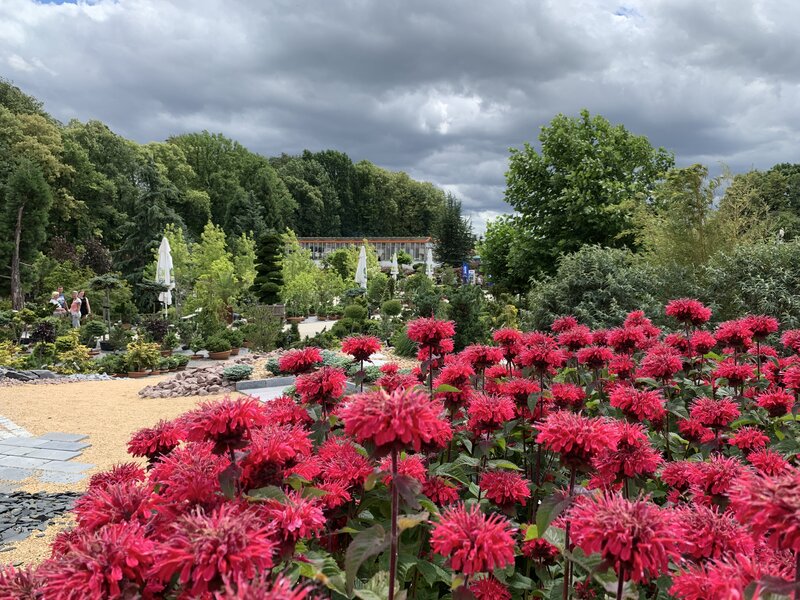
Prietitz Mammoth Garden
A 160-metre-long avenue of lavender, perennials in the most beautiful colors, the scent of jasmine, roses and sage. Nutka cypresses, sequoias and cedars. Plus four-meter-high palm trees in the desert garden. You don't have to travel far to experience this. All of this can also be found in the redwood garden in Prietitz.
"Combining plants and culture" is the motto here. Guests can wander through the area with around 250,000 perennials, numerous benches and playgrounds, small winter and themed gardens and be inspired. In the adjacent garden center, you can buy many of the park plants for your own garden right away. But in future, everything will be one size bigger. Opposite the garden center, a seven-hectare landscape and leisure park is being created to appeal to visitors' senses - a new adventure and show garden with a visitor and information center, a café, natural stages for artists, rose and fragrance gardens, insect-friendly plants, planted learning and adventure trails, attractive play areas for children and plenty of resting places to enjoy.
Cultural events also play a major role in the Mammutgarten. The Kulturorangerie (with up to 800 seats) attracts visitors with readings, concerts and workshops, for example. Calendar of events: www.mammutgarten.de/events
Mammutgarten
An der Parkmauer 5
01920 Elstra/Prietitz-Sachsen
www.mammutgarten.de
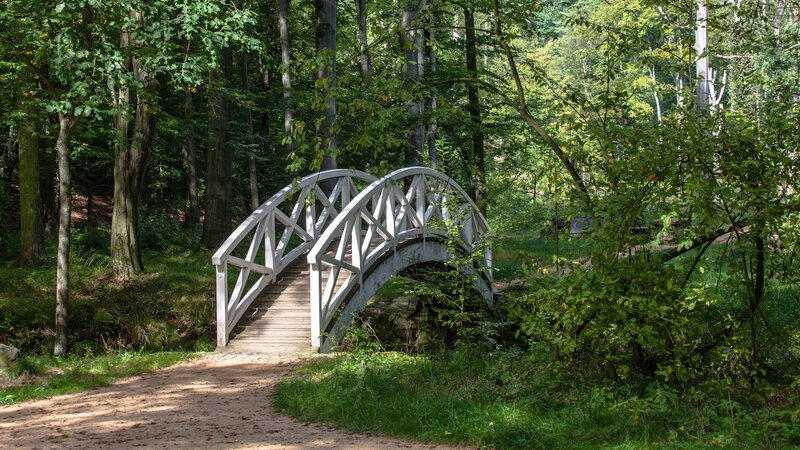
Seifersdorf valley
The Seifersdorf Valley is located along the Große Röder between Liegau-Augustusbad and Grünberg. It is best known for the landscape garden of the same name, which was designed by Christina von Brühl at the end of the 18th century.
This makes it one of the earliest landscape gardens in Germany and is still considered one of the most beautiful of its kind today. The design of the Seifersdorf Valley continues in the park of Seifersdorf Castle.
This served as the residence of the family of Count von Brühl for a long time and was rebuilt in its current form between 1818 and 1826 in the neo-Gothic style according to plans by architect Karl Friedrich Schinkel.
The Seifersdorf Valley is freely accessible.
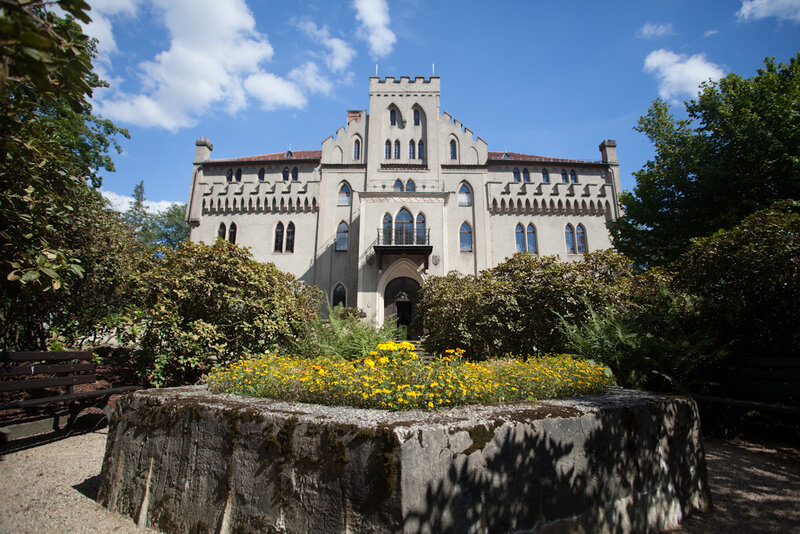
Seifersdorf Castle
The castle with the former manor and the Seifersdorf valley looks back on an impressive history. Seifersdorf Castle was built in 1560 as a Renaissance castle by the Haugwitz family. From 1585, the manor belonged to the von Grünrodt family, who also built the church in 1605. In 1747, Heinrich Graf von Brühl took over Seifersdorf, whose descendants lived there until 1945.
The von Brühl family created a gem. Seifersdorf Castle and manor served as the residence of the descendants of Heinrich Count von Brühl from 1775. The castle was rebuilt to its present form between 1818 and 1822 in the neo-Gothic style according to plans by architect Karl Friedrich Schinkel. In 1817, Carl Maria von Weber visited Seifersdorf and discussed the completion of the opera "Der Freischütz" with Carl von Brühl, the director of the royal theater in Berlin and lord of the castle in Seifersdorf. This was given its world premiere in 1821 under the directorship of Carl von Brühl.
The last count of Seifersdorf, Karl von Brühl-Renard, was the co-founder of the Tobiasmühle and the later Kleinwachau epilepsy center.
Seifersdorf Castle is visited by many guests interested in history and nature. The "Open Castle" takes place once a month and many events are held throughout the year.
Impressions
